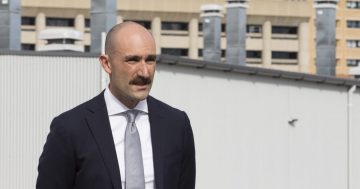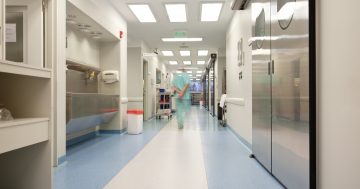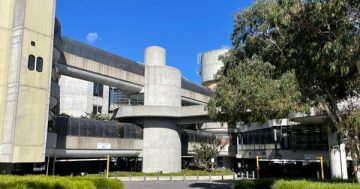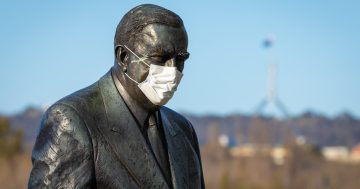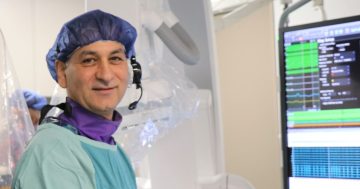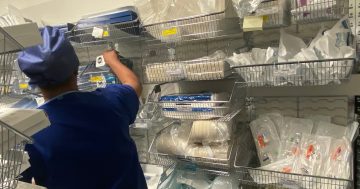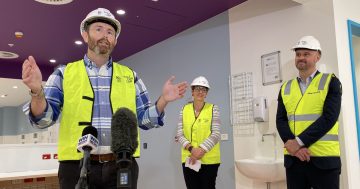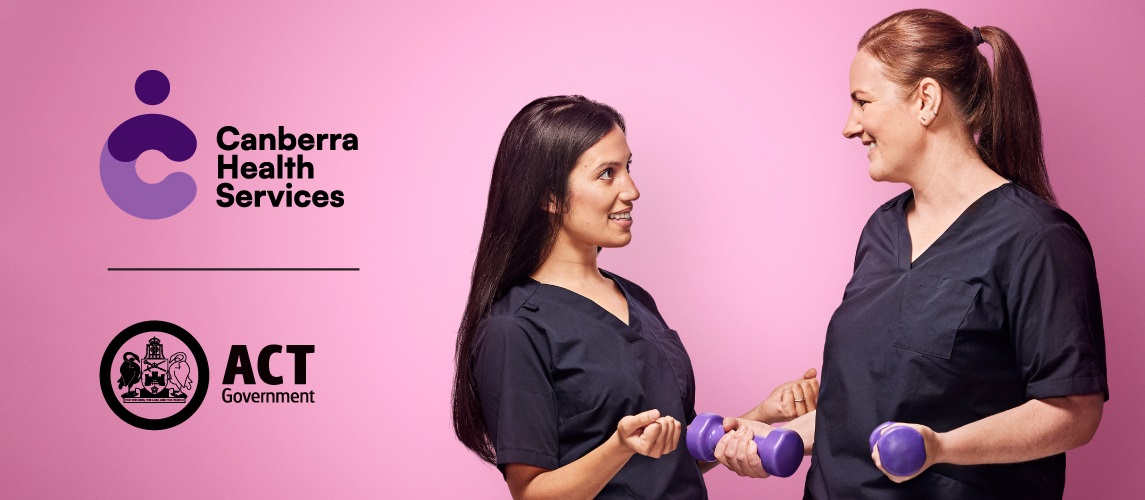
Canberra Health Services has a new look, which it is already attributing to more success in recruiting healthcare professionals to Canberra. Photo: Supplied.
Canberra Health Services is already heralding its rebrand as a success as its new website has gone live.
News of the 18-month $1.6 million investment to refresh CHS’ image has attracted criticism for months but it appears to already be achieving its goals.
A soft advertising campaign (minus the logo) for interstate recruitment was held between July and October, 2023, with the campaign landing page receiving more than 24,000 page views – double the clicks such a campaign would normally receive – and 417 people expressing an interest in working at CHS.
As a result, 217 people were found to be suitable and invited to join talent pools.
“New recruits directly told us the campaign was what influenced their decision to apply,” a CHS spokesperson said.
“We are currently running another phase of the campaign, this time targeting talent in both Australia and New Zealand. In the first two weeks of this campaign we received more than 15,300 visits to the campaign landing page … of which more than 12,500 were first-time visitors to the CHS website.
“More than 250 people registered their interest in working at CHS by completing our expression of interest form [across nursing and midwifery, allied health and medical].”
Seventeen candidates from New Zealand have already secured jobs.
The recruitment team is now off to Ireland and the UK with 158 interviews planned with prospective candidates.
But getting more staff on the ground isn’t the project’s only aim.
Canberra Hospital Department of Infectious Diseases director Sanjaya Senanayake said presenting a more cohesive and professional-looking unit would also help CHS attract more research grants, which in turn would increase the number of experienced clinicians choosing Canberra as a place to work and study.
“As a doctor who works with patients and who attends the ANU Medical School [as a lecturer] … [I’m hoping] recruitment will explode,” he said.
“It tends to snowball from there [and] having that research done locally benefits the ACT as well.”
Dr Senanayake compared it to the brand recognition received by somewhere like Harvard – when people heard you studied there, they could think “wow, some amazing research comes from there”.
“I’d love to see that reflected back at CHS,” he said.
“Attracting important researchers here [means] people will think they want to come here to learn.”

The new branding features employees of CHS and is AAA accessibility rated. Photo: Supplied.
Another important aspect of the rebrand is inclusivity and accessibility.
The new logo, colours and fonts chosen meet AAA accessibility standards, which means they are highly accessible to people with disabilities.
“This is about making Canberra Health Services easier to access and easier to navigate for the hundreds of people who interact with our organisation every day,” the CHS spokesperson said.
“We have heard from consumers and the community that some of our services and facilities are hard to find and use – they have inconsistent names and poor signage.
“As our services continue to grow and we build more health facilities across the ACT, we need to ensure people are able to access and identify the services they need.”
The new branding elements will be rolled out across signage, wayfinding and information pamphlets for patients and their families.
New signage will be installed progressively in the coming month across hospitals and the more than 28 other health services offered through CHS.
Dr Senanayake was especially impressed with the new booklets and guides for patients.
“The old ones were text heavy and difficult to navigate … these are friendly, something you want to open with simple language, not as much information, it just tells you what you need,” he said.
“I think they will help make people feel more comfortable about being in hospital and make their relatives feel more comfortable as well.”
The rebrand still has its critics.
The Canberra Liberals have again blasted the spend, stating underlying systemic culture issues should have been addressed first.
“The rationale that CHS had a ‘brand identity crisis’ and a rebrand would lift consumer perceptions and satisfaction, along with CHS’ ability to attract high quality staff, is hard to believe and I don’t think this rebrand exercise at a cost of $1.6 million will achieve that,” Shadow Health Minister Leanne Castley argued.
“The $1.6 million being spent on a rebrand would have paid for 60 hip replacements, 400 cataract operations or 600 MRIs.”
Official briefs had raised public and stakeholder concerns about perceptions of the project’s value for consumers.
“I believe these warnings have been completely vindicated,” Ms Castley said.
“A Canberra Liberals government will undertake a Royal Commission into the ACT health system if elected in October this year which will go a long way in addressing these systemic issues.”












